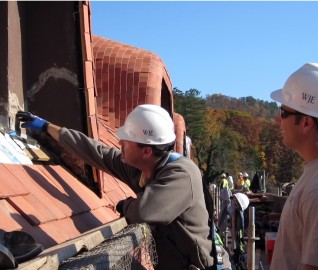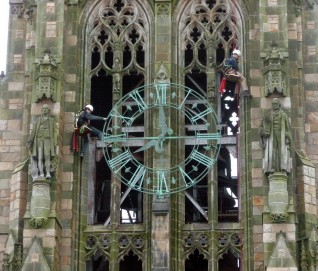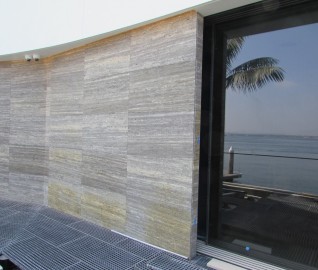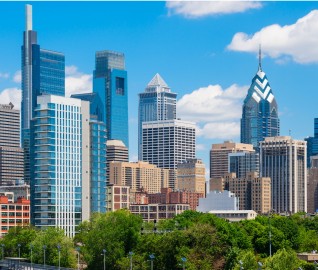Philadelphia
Ordinance Administration
The Department of Licenses and Inspections (L&I) administers four maintenance inspection ordinances for the City of Philadelphia, covering exterior walls and appurtenances, fire escapes and fire escape balconies, private bridges, and piers and other waterfront structures. The L&I Department is located at 1401 John F. Kennedy Boulevard, Public Services Concourse, Philadelphia, PA 19102-1687. The requirements are described on L&I’s Maintenance Inspections website. For facades, private bridges, and piers, owners are required to retain qualified professionals for periodic inspections that share a common Summary Inspection Form, which is to be submitted using L&I's eCLIPSE system. For fire escapes and fire escape balconies only, a different Summary Inspection Form should be used.
Regulations requiring periodic inspections of these four types of structures, the filing of inspection reports, and the repair and maintenance of certain conditions discovered during such inspections were adopted into Title 4 of the Philadelphia Code (The Philadelphia Building Construction and Occupancy Code) as follows:
- The Periodic Inspection of Exterior Walls and Appurtenances ordinance, which was approved by City Council on February 4, 2010, and signed by the Mayor on February 17, 2010, added facade maintenance and inspection requirements to subcode "PM" (The Philadelphia Property Maintenance Code). In 2014, the requirements were moved to Section PM-315, Periodic Inspection of Exterior Walls and Appurtenances of Buildings. The City maintains an FAQ document for facade inspection reporting.
- The fire escape ordinance, which was approved by City Council on June 16, 2016, and signed by the Mayor on June 28, 2016, added maintenance and inspection requirements to Section PM-702 of subcode “PM” and Section F-1011 of subcode “F” (The Philadelphia Fire Code), renumbered F-1104.16.5.1 in 2019. The City maintains an FAQ document for fire escape inspection reporting.
- The private bridge inspection ordinance, which was approved by City Council on April 14, 2016, and signed by the Mayor on April 26, 2016, added maintenance and inspection requirements to Subcode “PM” under Section PM-316, Periodic Inspection of Private Bridges. The City maintains an FAQ document for private bridge inspection reporting.
- The ordinance for piers and other waterfront structures, which was approved by City Council on June 13, 2002, and signed by the Mayor on June 26, 2002, added maintenance and inspection requirements to subcode “PM”. In 2014, the requirements were moved to Section PM-314, Piers and Other Waterfront Structures, and in 2018, the rating system was aligned with that of the other maintenance inspections.
Buildings Requiring Facade Inspections
Periodic facade inspections are required for all buildings six or more stories in height. For affected buildings, the required facade inspections shall be conducted and reports shall be filed based on the following schedule (although requirements for individual buildings may vary based on the previous report submission):
| Construction date | Initial report | Next report based on original schedule |
|---|---|---|
| Prior to and including 1950 |
June 30, 2011 |
June 30, 2026 |
| 1951–1970 |
June 30, 2012 |
June 30, 2022 |
| 1971–1980 |
June 30, 2013 |
June 30, 2023 |
| 1981–1990 |
June 30, 2014 |
June 30, 2024 |
| 1991–2005 |
June 30, 2015 |
June 30, 2025 |
| 2006 or later | See below | See below |
For buildings constructed in 2006 or later, the initial inspection shall be conducted, and the required report shall be filed, within ten years after the certificate of occupancy was issued. For example, per the ordinance, a building constructed in 2012 would require facade inspections to be performed and reports to be filed in 2022, 2027, etc.
Following the initial inspection, an affected building shall be reinspected, and the required report shall be filed, on a five-year cycle based on the original schedule. A waiver may be applied for if all facades of an affected building have been "substantially restored" within the five-year cycle preceding a required inspection.
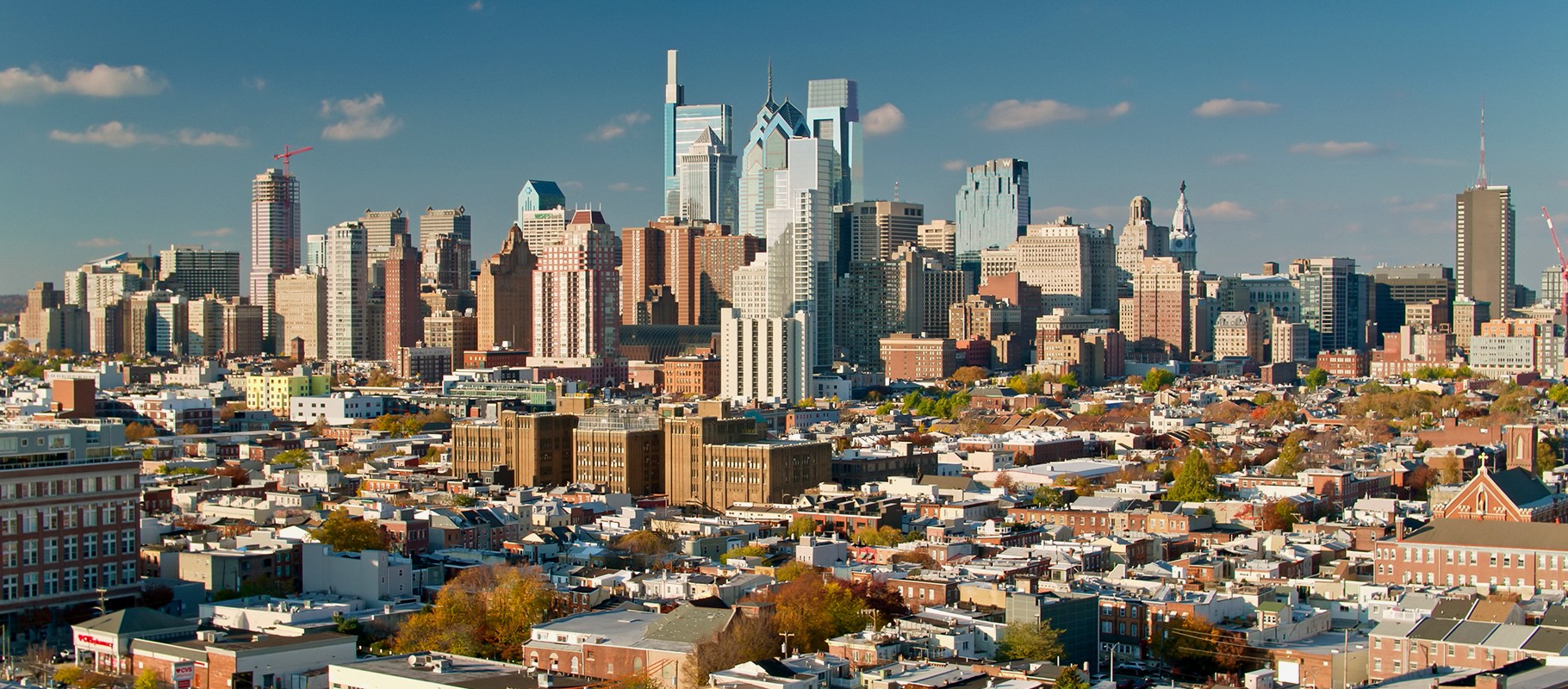
Buildings Requiring Fire Escape Inspections
Periodic inspections are required for all buildings with fire escapes and fire escape balconies. The code defines a fire escape as “A system of metal landings, balconies, stairs or ladders attached to a building that are not classified as an exterior stairway and are intended or designed to aid in egress from a building in an emergency.” A fire escape balcony is defined as “A balcony that projects from the building face and is intended for use in conjunction with a fire escape, an exit stair or an area of refuge.” Inspection requirements include engineering analysis or load tests to confirm load capacity and a water-resistant, reflective tag shall be posted with certain information required by code.
For affected buildings, the initial inspection was to have been conducted, and the required report was to have been filed, on or before July 1, 2017. An extension may have been granted if the fire escapes and fire escape balconies of an affected building were restored within one year prior to July 1, 2017.
If the construction of the fire escape or fire escape balcony was completed after July 1, 2007, the first inspection shall be conducted within ten years after completion of construction. For example, per the ordinance, a building constructed in 2012 would require fire escape inspections to be performed and reports to be filed in 2022, 2027, etc.
Each subsequent inspection shall be completed, and the required report shall be filed, within five years of filing the previous inspection report.
Private Bridges Requiring Inspections
Periodic inspections are required for each private bridge, defined as “An elevated structure that crosses over any part of a public right-of-way or publicly- owned pedestrian, bicycle or equestrian trail that typically allows for pedestrian passage between buildings or supports building systems and processing equipment or allows for vehicular access to private property, and often is referred to as a skyway, catwalk, skybridge or skywalk. A private bridge does not include a structure inspected as required by a federal authority such as the Federal Highway Administration or the Federal Railroad Administration.”
For affected private bridges, the initial inspection was to have been conducted, and the required report was to have been filed, on or before July 1, 2017.
If the construction of the private bridge was completed, or a certificate of occupancy was issued for the building to which it was attached, after July 1, 2007, the first inspection shall be conducted within ten years after completion of construction or issuance of the certificate of occupancy. For example, per the ordinance, a private bridge constructed in 2012 would require private bridge inspections to be performed and reports to be filed in 2022, 2027, etc.
Following the initial inspection, an affected private bridge shall be reinspected, and the required report shall be filed, within five years of filing the report concerning the previous inspection.
A waiver may be applied for if the private bridge has been "substantially restored" within the five-year cycle preceding a required inspection.
Piers and Other Waterfront Structures Requiring Inspections
Periodic inspections are required for “piers, bulkheads, wharves, docks, and other structures that have structural elements partly or totally below water along the shorelines of the Delaware River, Schuylkill River, or estuaries,” with exceptions for pipelines, bridges, dams, utility and tram towers, water intake and wastewater discharge structures, vacant structures meeting certain requirements, and bulkheads in Fairmount Park or along public rights-of-way regulated by other entities.
For affected piers and other waterfront structures, the initial inspection was to have been conducted, and the required report was to have been filed, on or before January 1, 2003. Following the initial inspection, an affected pier or other waterfront structure shall be reinspected, and the required report shall be filed, on a three-year cycle based on the initial deadline.
Summary
Refer to the Maintenance Inspection Summary (PDF) for additional information.
CONTACTS
Wiss, Janney, Elstner Associates, Inc.Phone: (215) 567-0703
E-mail: facadeordinance@wje.com
City of Philadelphia Department of Licenses and Inspections
601 Walnut Street, Suite 875W, Philadelphia, PA, 19106
Phone: (215) 567-0703
Email: codeenforcement.centralwest@phila.gov
RELATED INFORMATION FROM WJE.COM
-
![]() Clients turn to us when they need a firm that fully understands the aesthetic and functional... MORE >Services | Building Enclosures
Clients turn to us when they need a firm that fully understands the aesthetic and functional... MORE >Services | Building Enclosures -
![]() WJE professionals have successfully diagnosed and solved problems in thousands of building facades MORE >Services | Facade Assessment
WJE professionals have successfully diagnosed and solved problems in thousands of building facades MORE >Services | Facade Assessment -
![]() Learn about reducing the risk of degradation in your building facades. MORE >Webinars | Understanding the Causes and Significance of Facade Degradation
Learn about reducing the risk of degradation in your building facades. MORE >Webinars | Understanding the Causes and Significance of Facade Degradation -
![]() Learn about our Philadelphia office MORE >Offices | Philadelphia
Learn about our Philadelphia office MORE >Offices | Philadelphia



